MANILA, Philippines — The Delta variant which is twice as contagious as previous variants, is currently the most dominant across the globe, including the Philippines. Its high infection rate in the country has caused large daily tallies of as much as 26,000 in September.
As COVID-19 health facilities in the country reach their limit to tend to severe cases, infected Filipinos who get mild symptoms and have no comorbidities, are advised to stay at home to manage the illness.
If you or a family member somehow find yourselves in this situation, we put together a checklist to help get you up to speed on proper home care:
1. Set up a minimal to no-contact system in your home
Sick family member should have their own room to isolate in. If this is not possible, WHO recommends signaling a part of the home for the individual, distanced from the rest of the family.
Photo by freepik / Freepik.com
This means, making sure that the sick family member should have their own room to isolate in. If this is not possible, WHO recommends designating a part of the home for the individual, distanced from the rest of the family (at least one meter) and with limited movement around the house.
Once set up, follow this advice:
- Windows should be open for proper ventilation; not only will this let in fresh, clean air, but also disperses and reduces the viral particles present in indoor air.
- Everyone should wear masks, preferably those approved by the FDA since there are a lot of fake ones out there. Single-use masks should be changed every four to five hours at most, or when they become wet or dirty. Do not reuse.
- Provide the sick with dedicated dishes. Put food on a tray to leave outside their room which they can pick up. Or when bringing them food in person, don’t forget to maintain the one-meter distance.
If you are the designated caregiver, make sure you are in good health with no underlying conditions.
2. Be thorough with cleanliness
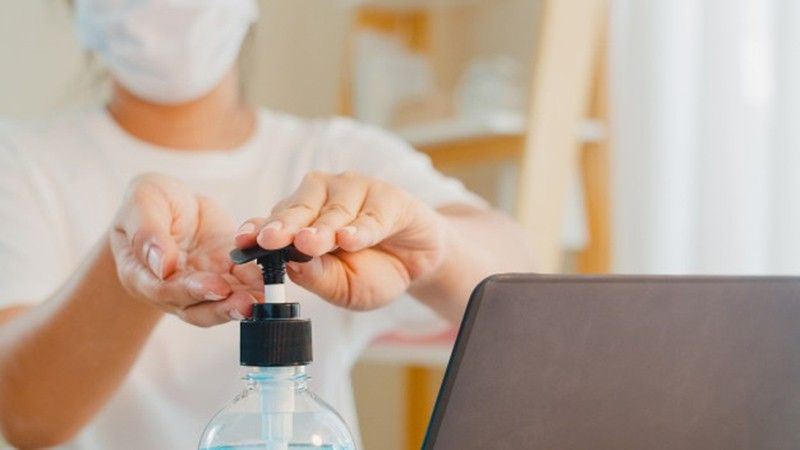
When isolating at home due to mild COVID-19, make sure to observe cleanliness and proper hygiene at all times.
Photo by tirachardz / Freepik.com
More than keeping distance or close contact, everyone should observe cleanliness and hygiene at all times:
- Wash hands frequently using soap and water for at least 20 seconds each time.
- Provide the sick with their own toiletries and cleaning supplies, as well as a designated lined trash bin.
- The assigned caregiver, when tending the sick should avoid direct contact with the patient’s body fluids. Handle bedding, towels, clothes and other personal effects carefully with gloves on.
- Clean and disinfect fomites—high-touch or high-use—objects and surfaces in their room as well. When it comes to patient waste, make sure to secure them tightly in a strong bag and disposed of them separately.
3. Monitor symptoms
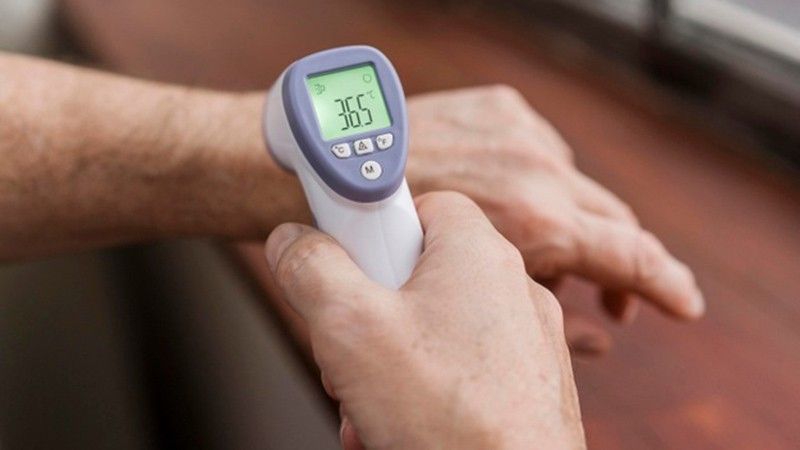
Sick family members can check their symptoms when they are provided them with the right tools.
Photo by freepik / Freepik.com
Help the patient monitor their symptoms by providing them with the right tools:
- Thermometer – Check body temperature at least twice a day, in the morning and in the evening.
- Pulse oximeter – Measures both the heart rate and the amount of oxygen in the blood (in %). Use it at least three times a day, take note of the normal ranges: for heart rate, it’s 70-100 beats per minute (bpm) and oxygen saturation is at 95-100% range. Watch out for the latter especially, since anything within and below the range of 90% to 94% accompanied by chest pain, pale or blue skin or lips, heavy breathing, and confusion, dizziness or drowsiness should prompt you to seek medical help immediately).
- Notebook – Track symptoms using a notebook or notes as this pertinent information can be quite useful especially when consulting with a doctor.
Remember to disinfect both the thermometer and pulse oximeter with a disinfectant wipe or a cotton ball soaked in rubbing alcohol (70% isopropyl alcohol or 60% ethyl alcohol) after use.
4. Manage symptoms
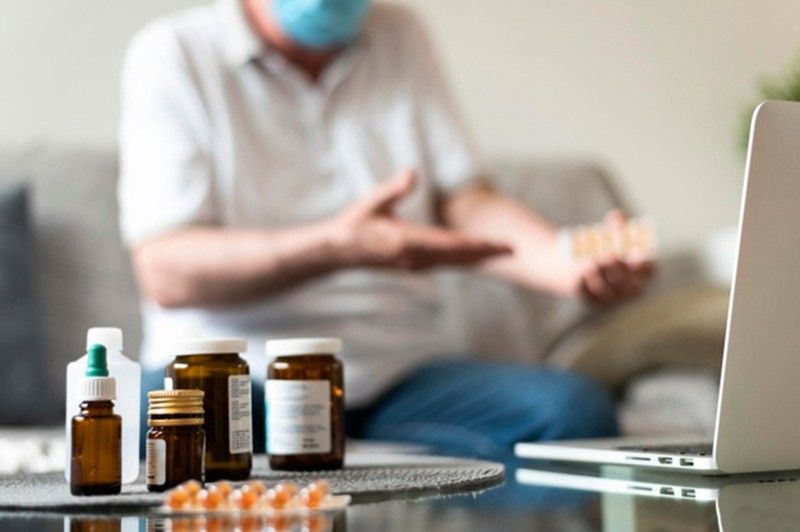
Mild symptoms can be managed using over-the-counter medicine.
Photo by freepik / Freepik.com
When it comes to managing symptoms, it’s important NOT to self-medicate unless it’s over-the-counter (OTC) medicine (but take note of indications and correct doses).
- Paracetamol for fever, muscle pain or headache
- Carbocisteine + Zinc (Solmux Advance) for cough. Carbocisteine helps melt phlegm, making it easier to expel. Zinc on the other hand, helps shorten cough duration for faster recovery.
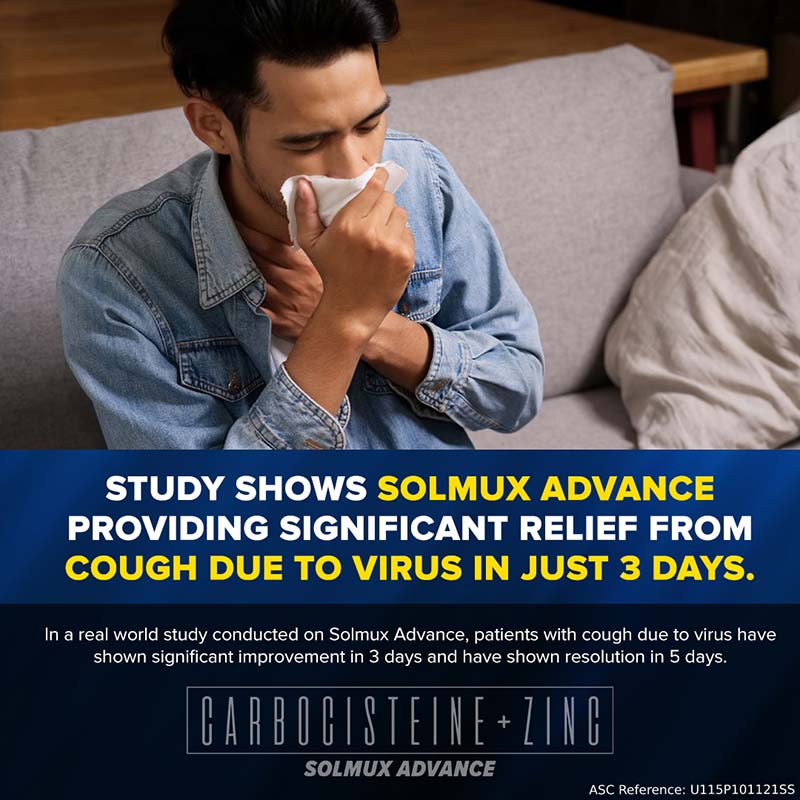
These can be delivered to your home since many popular drugstores have their own online store platforms. For Carbocisteine + Zinc (Solmux Advance), check this link on where to buy.
Everything else should be consulted with the family’s health care provider.
5. Keep them company even when distanced
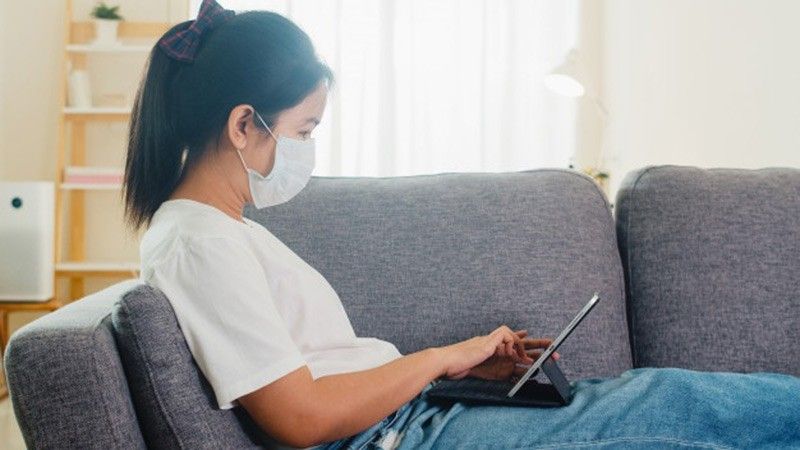
Keeping constant communication with sick friends and family helps with stress.
Photo by tirachardz / Freepik.com
Anyone getting sick in the family, more so COVID-19, can be really stressful for everyone. It could get especially lonely for the sick ones isolating. The Mayo Clinic emphasizes keeping in constant communication with friends and family and to avoid sources of stress.
It’s also a good idea to fill your days with good entertainment or other leisurely indoor activities such as reading and playing online games.
Ending isolation
Lastly, when it comes to ending isolation, both the caregiver and the sick family member should consult with their family healthcare provider or doctor.
The Centers for Disease Control and Prevention (CDC) recommends at least 14 days after recovery or at least meets the criteria to end home isolation.
At the end of day, observing health protocols and getting fully vaccinated are still the best ways to protect yourself and your loved ones from COVID-19.
Whichever vaccine you get, each one is effective at preventing severe infections that lead to hospitalization. Vaccinated people are 8x less likely to get infected and 25x less likely to experience hospitalization or death.
For more information on Carbocisteine + Zinc (Solmux Advance), visit their website at https://www.unilab.com.ph/products/solmux-advance.
If symptoms persist, consult your doctor.
ASC Reference Code: U082P102621SS
SOURCES:
Centers for Disease Control and Prevention (2021). “Caring for Someone Sick at Home: Advice for caregivers in non-healthcare settings.” Centers for Disease Control and Prevention. Accessed via https://www.cdc.gov/coronavirus/2019-ncov/if-you-are-sick/care-for-someone.html
Katela, K. (2021). “5 Things To Know About the Delta Variant.” Yale Medicine. Accessed via https://www.yalemedicine.org/news/5-things-to-know-delta-variant-covid
Mayo Clinic (2021). “Treating COVID-19 at home: Care tips for you and others.” Mayo Clinic. Accessed via https://www.mayoclinic.org/diseases-conditions/coronavirus/in-depth/treating-covid-19-at-home/art-20483273
Prasad A. S. (2008). “Zinc in human health: effect of zinc on immune cells.” Molecular medicine (Cambridge, Mass.), 14(5-6), 353–357. https://www.ncbi.nlm.nih.gov/pmc/articles/PMC2277319/
World Health Organization (2021). “Safe care at home.” World Health Organization. Accessed via https://www.who.int/emergencies/diseases/novel-coronavirus-2019/media-resources/science-in-5/episode-36—safe-care-at-home?gclid=Cj0KCQjwtMCKBhDAARIsAG-2Eu8HqAh5GMAAKsviIOsii6Fnf1e5_4aLlESQbo6ShhUQ_S4iupnrRyEaAkwFEALw_wcB
[ad_2]
Originally Appeared Here